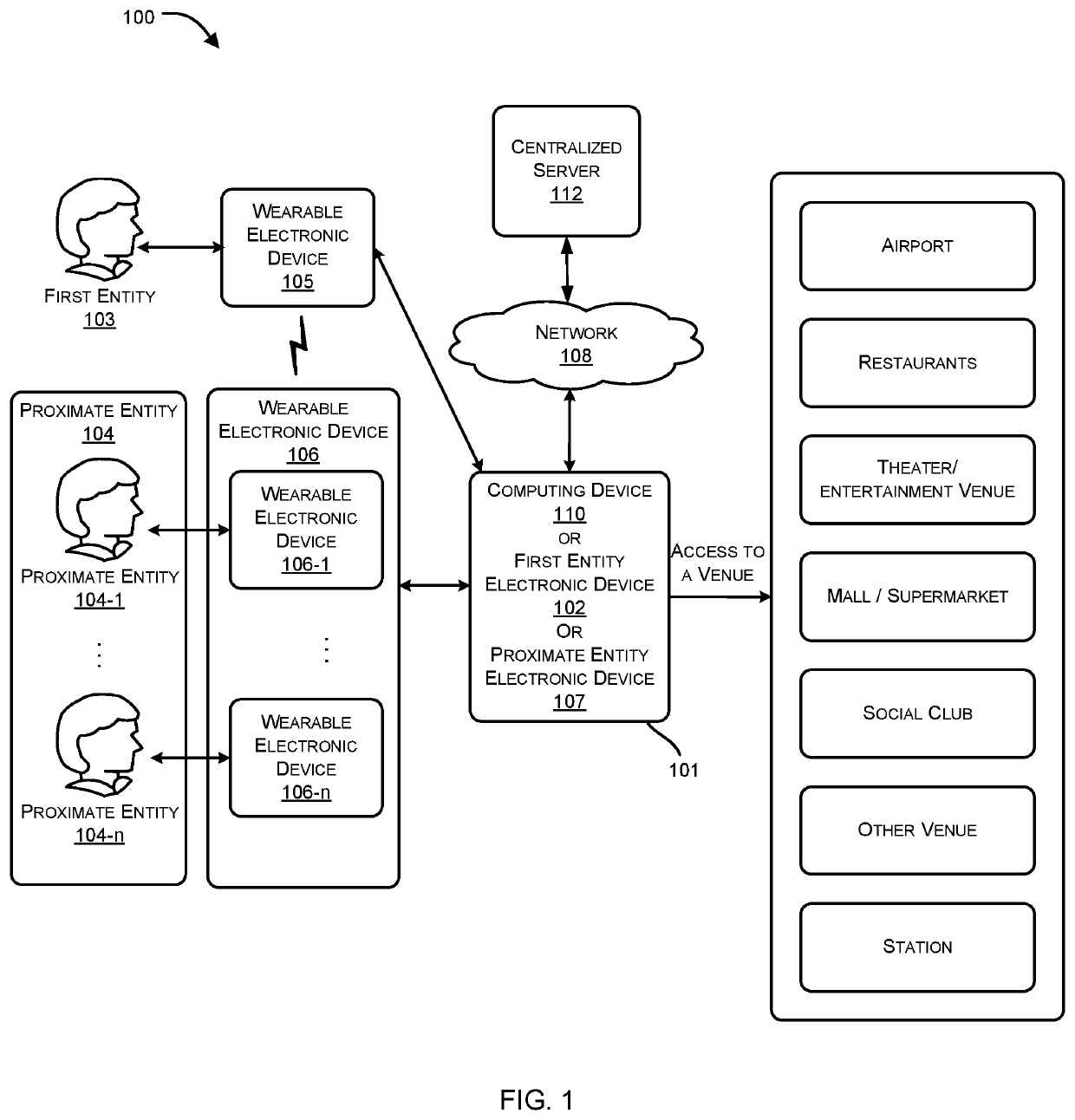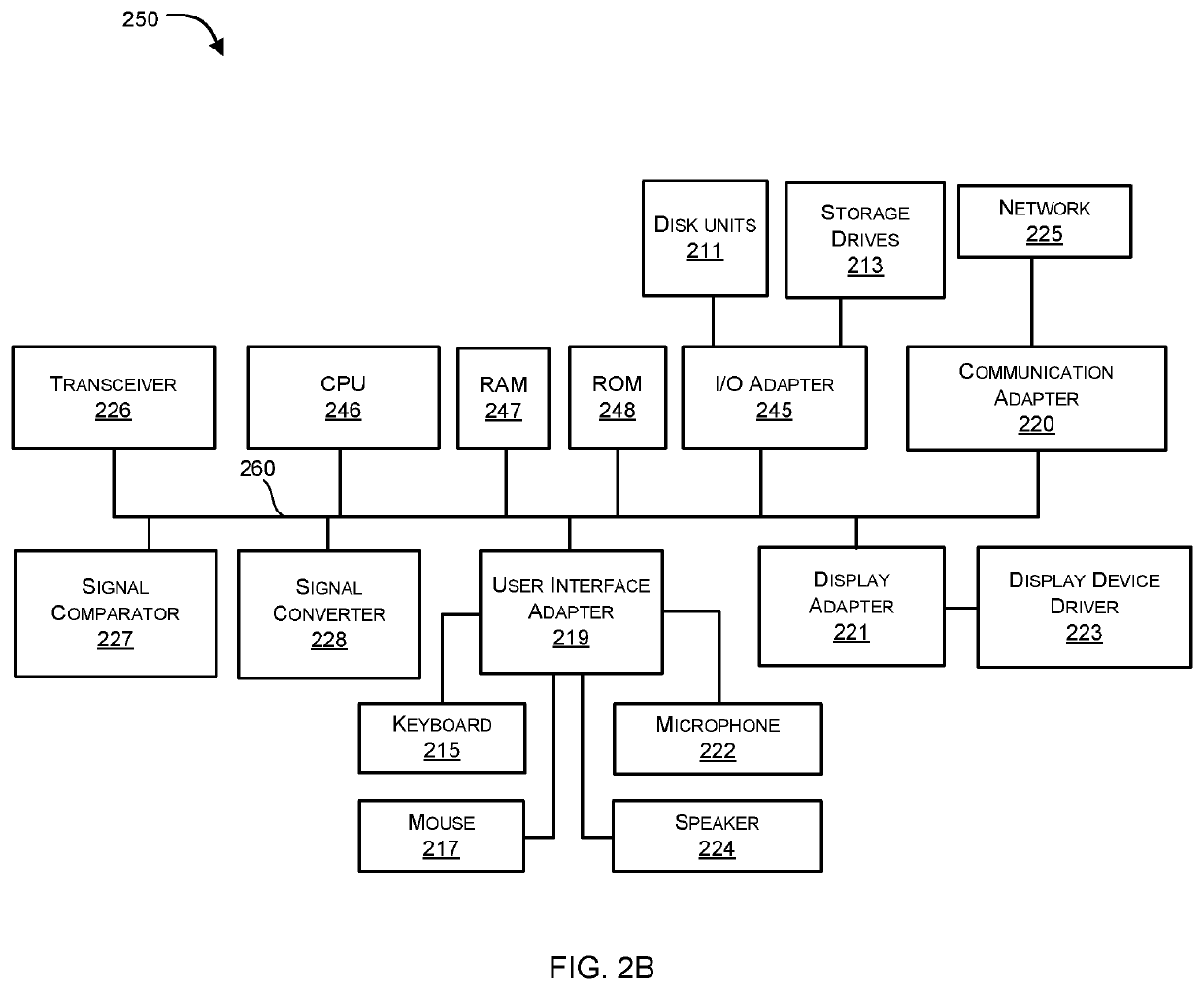System and method to manage safe physical distancing between entities
a physical distancing and system technology, applied in the field of health status detection and access control, can solve the problems of high probability of each individual coming in close contact with another person or with common objects, methodologically not being possible by conventional systems or methods, and public places may require the presence of people in large numbers, so as to facilitate safe physical distancing, and facilitate the effect of updating the databas
- Summary
- Abstract
- Description
- Claims
- Application Information
AI Technical Summary
Benefits of technology
Problems solved by technology
Method used
Image
Examples
Embodiment Construction
[0030]The embodiments herein and the various features and advantageous details thereof are explained more fully with reference to the non-limiting embodiments that are illustrated in the accompanying drawings and detailed in the following description. Descriptions of well-known components are omitted so as to not unnecessarily obscure the embodiments herein. The examples used herein are intended merely to facilitate an understanding of ways in which the embodiments herein may be practiced and to further enable those of skill in the art to practice the embodiments herein. Accordingly, the examples should not be construed as limiting the scope of the embodiments herein.
[0031]The embodiments herein provide a technique to facilitate controlled access to facilities and services with intent to track exposure, limit access to and manage interactions to facilitate safe physical distancing between entities for limiting pathogenic exposure therebetween. Referring now to the drawings, and more...
PUM
 Login to View More
Login to View More Abstract
Description
Claims
Application Information
 Login to View More
Login to View More - R&D
- Intellectual Property
- Life Sciences
- Materials
- Tech Scout
- Unparalleled Data Quality
- Higher Quality Content
- 60% Fewer Hallucinations
Browse by: Latest US Patents, China's latest patents, Technical Efficacy Thesaurus, Application Domain, Technology Topic, Popular Technical Reports.
© 2025 PatSnap. All rights reserved.Legal|Privacy policy|Modern Slavery Act Transparency Statement|Sitemap|About US| Contact US: help@patsnap.com



